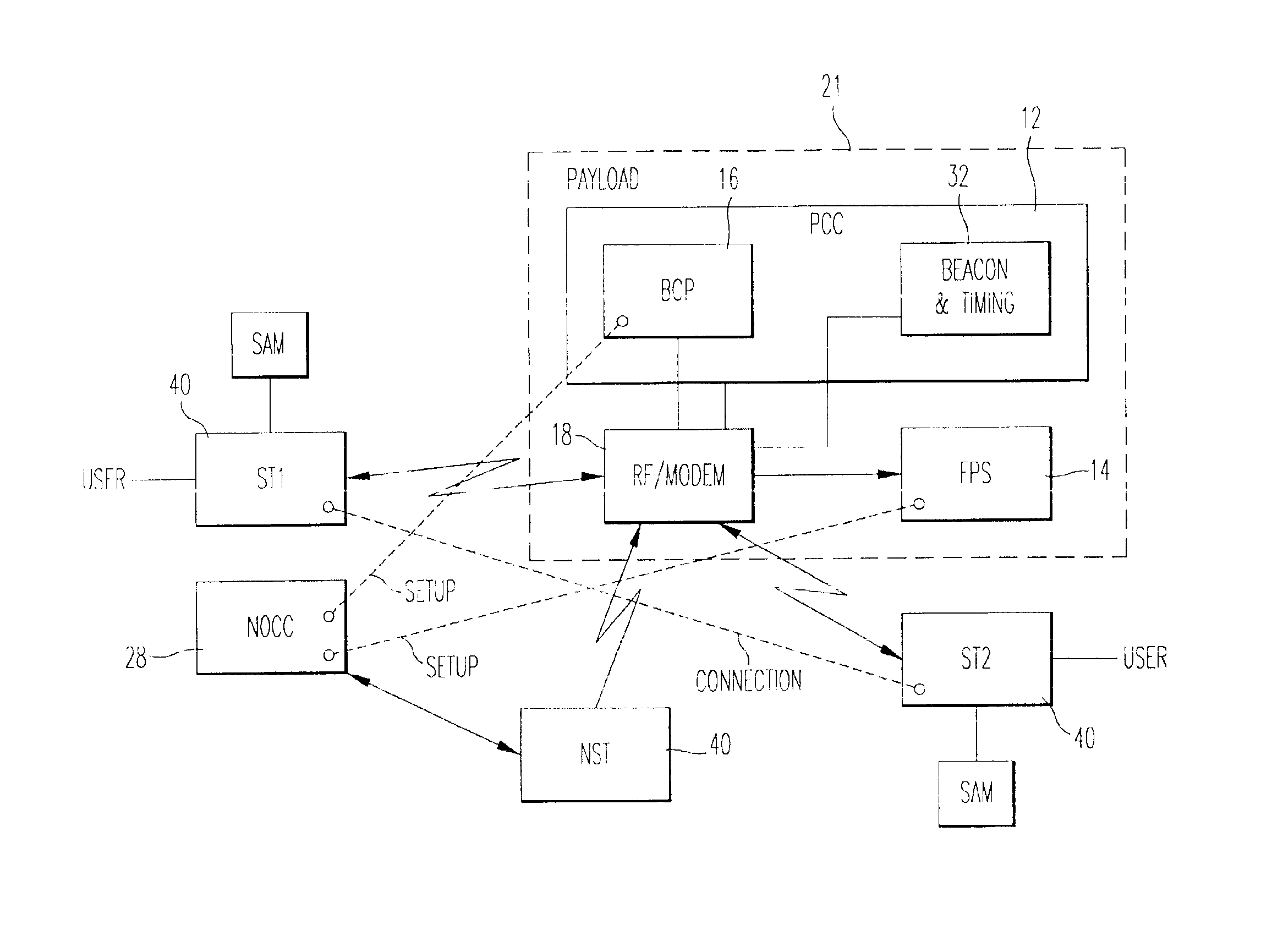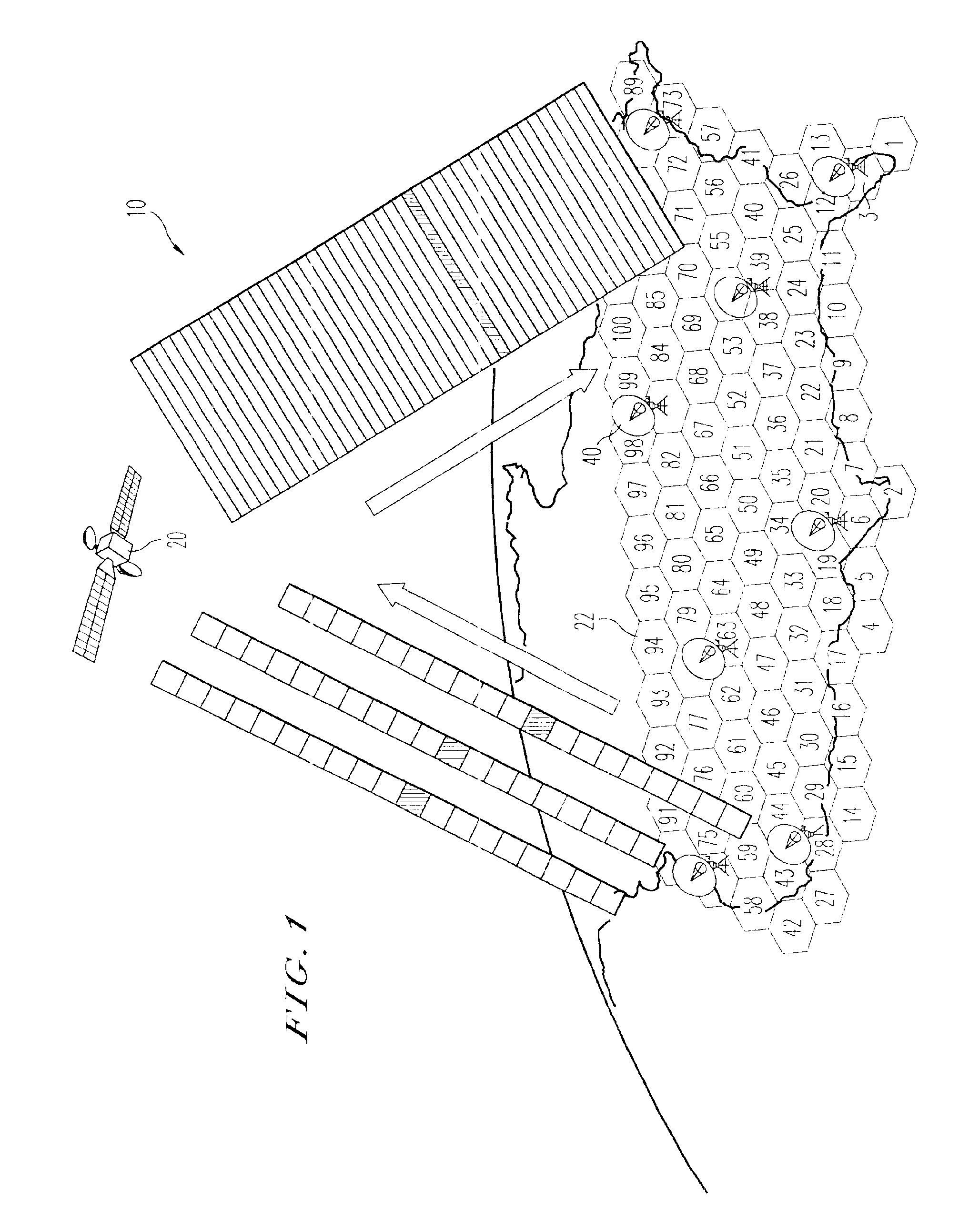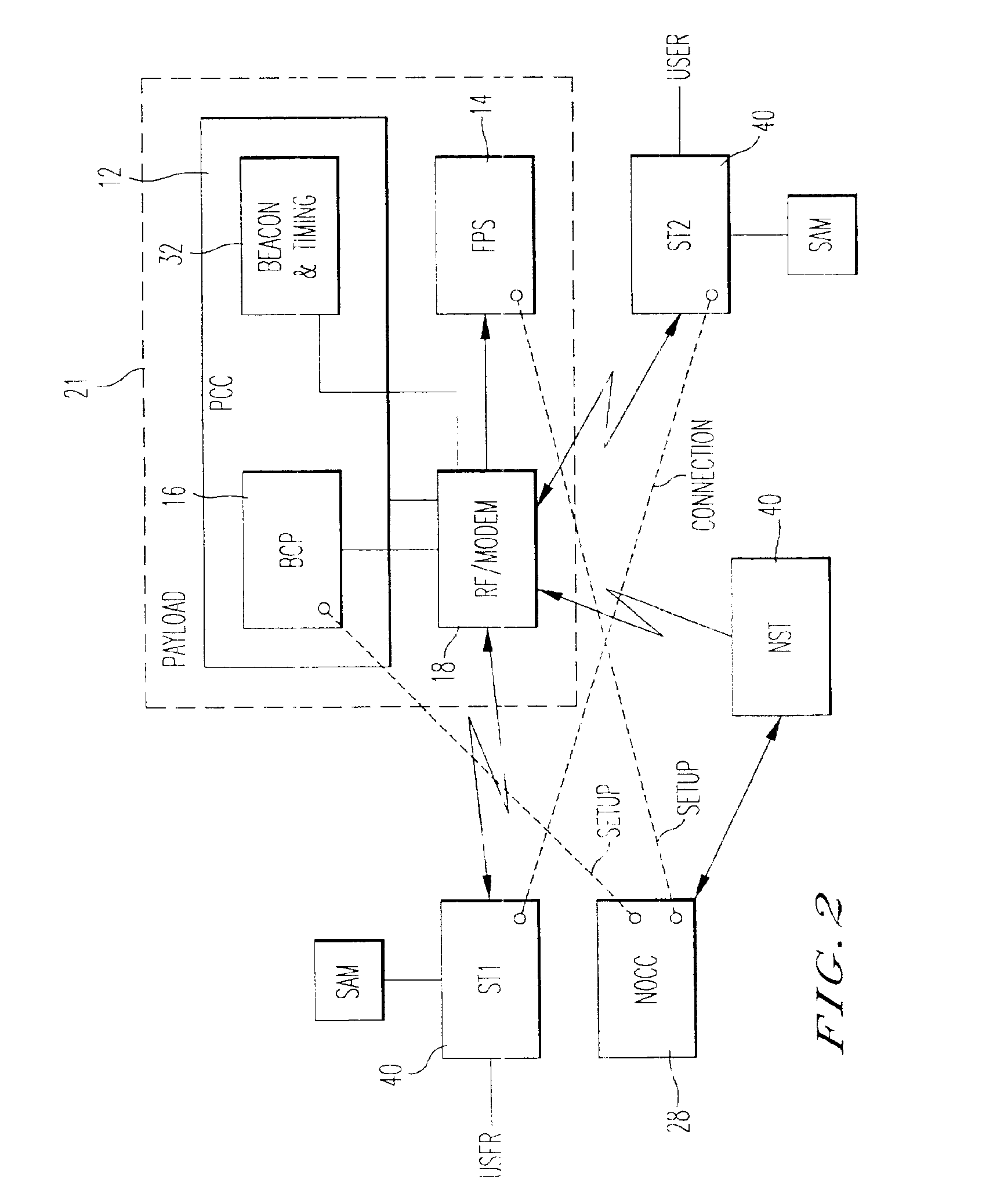System for providing satellite bandwidth on demand employing uplink frame formatting for smoothing and mitigating jitter and dynamically changing numbers of contention and data channels
- Summary
- Abstract
- Description
- Claims
- Application Information
AI Technical Summary
Benefits of technology
Problems solved by technology
Method used
Image
Examples
Embodiment Construction
With reference to FIG. 1, the broadband multimedia satellite system 10 of the present invention preferably employs one or more geosynchronous orbit (GEO) satellites 20 and offers a wide range of user data rates and services on a bandwidth-on-demand (BOD) basis. The system 10 uses the latest generation of high-power satellites, employing on-board digital signal processing, multiple high-gain spot beams, and on-board packet routing. The broadband multimedia satellite system 10 is preferably capable of supporting a maximum peak capacity of at least 10 Gigabits per second (Gbps) of user data in a point-to-point OTT) transmission mode. Delivery of services to users is provided via low-cost ultra-small-aperture terminals (USATs) hereinafter referred to as satellite terminals (STs) 40. An ST 40 can be an end-user ST or a network ST (NST), as shown in FIG. 2. The broadband multimedia satellite system 10 preferably operates in the 30 / 20 GHz Ka-band spectrum alloca...
PUM
 Login to View More
Login to View More Abstract
Description
Claims
Application Information
 Login to View More
Login to View More - R&D
- Intellectual Property
- Life Sciences
- Materials
- Tech Scout
- Unparalleled Data Quality
- Higher Quality Content
- 60% Fewer Hallucinations
Browse by: Latest US Patents, China's latest patents, Technical Efficacy Thesaurus, Application Domain, Technology Topic, Popular Technical Reports.
© 2025 PatSnap. All rights reserved.Legal|Privacy policy|Modern Slavery Act Transparency Statement|Sitemap|About US| Contact US: help@patsnap.com



